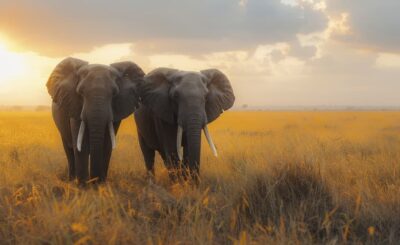Planning a safari in Tanzania is an exhilarating adventure filled with opportunities to witness some of Africa’s most magnificent wildlife in their natural habitats. With its diverse landscapes, from the iconic Serengeti plains to the dramatic Ngorongoro Crater and the remote Selous Game Reserve, Tanzania offers a variety of safari routes that cater to different preferences and interests. This blog serves as a comprehensive guide to help you create your ideal Tanzania safari itinerary, exploring the best routes and what each destination has to offer.
The Northern Circuit: A Wildlife Spectacle
1. Serengeti National Park: Serengeti is synonymous with the Great Migration, where millions of wildebeest, zebras, and other grazers move across the plains in search of fresh grasslands. The park is also renowned for its abundant lion prides, cheetahs, elephants, and diverse birdlife. Hot air balloon safaris offer a unique perspective of the vast savannah landscapes.
2. Ngorongoro Conservation Area: Home to the Ngorongoro Crater, a UNESCO World Heritage Site and one of the world’s largest calderas, this area boasts dense wildlife populations, including the Big Five (lions, elephants, buffaloes, leopards, and rhinos). The crater’s enclosed ecosystem provides excellent game viewing opportunities year-round.
3. Tarangire National Park: Known for its large elephant herds and majestic baobab trees, Tarangire offers a quieter and more intimate safari experience compared to the Serengeti and Ngorongoro. Visitors can also spot giraffes, zebras, wildebeests, and over 500 bird species along the Tarangire River.
The Southern Circuit: Remote Wilderness and Riverine Landscapes
4. Selous Game Reserve: As one of Africa’s largest game reserves, Selous is celebrated for its untouched wilderness and diverse ecosystems, including savannahs, woodlands, and the Rufiji River. Boat safaris offer a unique perspective, allowing sightings of hippos, crocodiles, and a variety of bird species.
5. Ruaha National Park: Known for its rugged terrain and baobab-studded landscapes, Ruaha is a haven for predators like lions, leopards, and cheetahs. The park’s remote location ensures a more exclusive safari experience, with opportunities for walking safaris and cultural encounters with the local communities.
Off-the-Beaten-Path Routes: Unique Wildlife Encounters
6. Mahale Mountains National Park: Nestled on the shores of Lake Tanganyika, Mahale Mountains is renowned for its chimpanzee population. Trekking through the forested slopes to observe these primates in their natural habitat is a highlight of any safari to this remote and pristine national park.
7. Katavi National Park: Remote and untouched, Katavi offers a wilderness experience far from the crowds. Known for its large herds of buffalo and elephant, as well as sightings of rare species like sable antelope and roan antelope, Katavi promises exclusive game viewing opportunities in a rugged environment.
Crafting Your Ideal Itinerary
When planning your Tanzania safari itinerary, consider the following tips to make the most of your experience:
1. Seasonal Considerations: The timing of your safari can significantly impact wildlife sightings. The Great Migration in the Serengeti typically occurs from July to October, while dry seasons (June to October and January to February) generally offer better game viewing due to reduced vegetation.
2. Accommodation Choices: Tanzania offers a range of accommodations, from luxury lodges and tented camps to budget-friendly options and exclusive safari lodges. Choose accommodations that align with your comfort preferences and desired level of immersion in the wilderness.
3. Guided Tours vs. Self-Drive Safaris: While guided tours with experienced safari guides offer insights into wildlife behavior and ensure safety, self-drive safaris provide flexibility and a sense of adventure. Consider your comfort level and expertise in navigating unfamiliar terrain when choosing between guided tours and self-drive options.
4. Cultural Experiences: Tanzania’s rich cultural diversity offers opportunities to engage with local communities and learn about traditional customs and lifestyles. Consider adding cultural tours or visits to Maasai villages to enrich your safari experience beyond wildlife encounters.
Conclusion
Crafting your ideal safari itinerary in Tanzania involves selecting routes that align with your wildlife interests, desired level of adventure, and cultural curiosity. Whether you opt for the famous northern circuit with its spectacular wildlife migrations or venture into the remote wilderness of the southern circuit, Tanzania promises unforgettable wildlife encounters and breathtaking landscapes that will leave a lasting impression. By planning thoughtfully and considering seasonal variations, accommodation preferences, and cultural opportunities, you can ensure a safari experience that exceeds your expectations and creates cherished memories of Africa’s natural wonders. Start planning today and embark on a journey to discover Tanzania’s unparalleled beauty and wildlife diversity firsthand.






